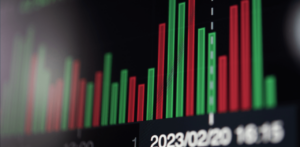Either-way markets are an intriguing phenomenon in the world of trading. These unique market conditions present traders and investors with equal opportunities for prices to break out and move higher or break down and move lower. In this blog post, we will explore the concept of either-way markets and provide insights on how to identify and navigate them successfully.
Understanding Either-Way Markets
An either-way market refers to a situation where analysts believe there is an almost equal chance for prices to go in either direction. It typically occurs after a prolonged period of one-way market movement, where prices have been consistently moving higher or lower. During an either-way market, price action tends to move sideways without clear bullish or bearish trends.
While some may view either-way markets as a temporary phase, they can last longer depending on various economic, financial, and monetary factors. Traders and investors should not overlook either-way markets as they present numerous short-term and long-term opportunities.
Spotting an Either-Way Market
Identifying an either-way market is essential for traders and investors looking to capitalize on its potential. Chart patterns and technical indicators play a significant role in spotting these market conditions. One of the most recognizable chart patterns in an either-way market is a rectangular pattern with well-defined and triple-confirmed support and resistance levels. Price action moves within this pattern, consolidating previous gains or losses while awaiting a catalyst for a breakout or breakdown.
Analysis of longer-term time frames can reveal the existence of either-way markets. Once identified, traders can utilize chart patterns and technical indicators on shorter time frames to determine the direction in which the market is more likely to move. Two popular chart patterns used in trading either-way markets are Elliot Wave Analysis and triangle patterns.
Elliot Wave Analysis
Ralph Nelson Elliott’s Elliot Wave Analysis, developed in the 1930s, breaks down long-term trends into smaller price action moves called waves. By analyzing these waves, traders can gauge the direction in which an either-way market is likely to move. The 5-3 pattern, consisting of five moves in the trend direction interrupted by three smaller countertrend moves, is particularly useful in identifying potential market movements.
Triangle Patterns
Triangle consolidation patterns can indicate an increase or decrease in bullish and bearish momentum. The symmetrical triangle pattern, one of the more reliable chart patterns in an either-way market, can provide valuable insights into future price movements.
Embracing the Potential of Either-Way Markets
An either-way market, despite its indecisiveness, presents a unique opportunity for traders and investors. By employing appropriate strategies based on chart patterns and technical analysis, traders can position their portfolios to benefit from potential breakouts or breakdowns. Short-term counter-position trades can be particularly lucrative for long-term investors.
It is important to note that either-way markets can transition into coiled markets, which often lead to significant price action moves following a breakout or breakdown. Therefore, traders should remain vigilant and adapt their strategies accordingly.
Conclusion
Either-way markets offer an exciting and dynamic environment for traders and investors. Recognizing and understanding these market conditions can unlock a world of opportunities. By leveraging chart patterns, technical indicators, and strategic thinking, market participants can navigate either-way markets with confidence and potentially enhance their trading success.
Remember, the key to thriving in either-way markets lies in adaptability and the ability to seize opportunities in the face of uncertain price movements.








